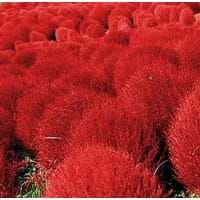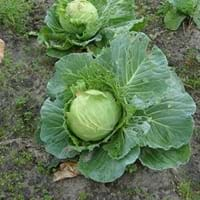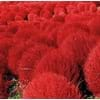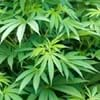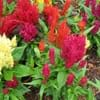Type
Ornamental Plants, Shrubs
Vegetable
Origin
Eastern Europe, Western Asia
Europe, Mediterranean, Canary Islands, Northern Africa
Types
Kochia Indica, Neokochia californica
Not Available
Number of Varieties
Not Available
Habitat
gardens, Temperate Regions
Not Available
USDA Hardiness Zone
3-11
Not Available
Sunset Zone
A1, A2, A3, H1, H2, 1a, 1b, 2a, 2b, 3a, 3b, 4, 5, 6, 7, 8, 9, 10, 11, 12, 13, 14, 15, 16, 17, 18, 19, 20, 21, 22, 23, 24
A1, A2, A3, H1, H2, 1a, 1b, 2a, 2b, 3a, 3b, 4, 5, 6, 7, 8, 9, 10, 11, 12, 13, 14, 15, 16, 17, 18, 19, 20, 21, 22, 23, 24
Habit
Upright/Erect
Rosette/Stemless
Flower Color
Not Available
Yellow
Flower Color Modifier
Bicolor
Bicolor
Fruit Color
Not Available
Brown
Leaf Color in Spring
Light Green
Not Available
Leaf Color in Summer
Not Available
Green, Gray Green, Dark Green
Leaf Color in Fall
Gray Green, Burgundy, Crimson
Green, Gray Green
Leaf Color in Winter
Light Green
Green, Gray Green
Leaf Shape
Linear
Spinach Type
Plant Season
Fall
Spring, Fall, Winter
Sunlight
Full Sun
Full Sun, Partial Sun
Type of Soil
Clay, Loam, Sand
Loam, Sand
The pH of Soil
Acidic, Neutral, Alkaline
Neutral, Alkaline
Soil Drainage
Average
Well drained
Bloom Time
Summer
Spring, Late Spring, Early Summer
Tolerances
Drought
Drought
Where to Plant?
Ground
Container, Ground, Pot
How to Plant?
Stem Cutting, Transplanting
Seedlings
Plant Maintenance
Medium
Medium
Watering Requirements
occasional watering once established, Requires consistently moist soil
Do Not over Water
In Summer
Moderate
Lots of watering
In Spring
Moderate
Moderate
In Winter
Less Watering
Average Water
Soil pH
Neutral
Neutral, Alkaline
Soil Type
Well drained
Loam, Sand
Soil Drainage Capacity
Loamy, Well drained
Well drained
Sun Exposure
Bright direct sunlight
Full Sun, Partial Sun
Pruning
Pinch or prune as they grow to promote branching and bushiness, Remove dead branches
No need to prune, Remove damaged leaves, Remove dead branches, Remove dead leaves
Fertilizers
All-Purpose Liquid Fertilizer
Nitrate based fertilizers
Pests and Diseases
Aphids, Mosquito
Alternaria Leaf Spot, Anthracnose, Aphids, Beet armyworm, Black rot, Cabbage looper, Cercospora leaf spot, Clubroot, Cutworms, Damping-off, Diamondback moth, Downy mildew, Flea Beetles, Leaf spot, Red blotch, Root knot nematode, Thripes
Plant Tolerance
Heat Tolerance, Humidity
Drought
Flower Petal Number
Not Available
Single
Foliage Texture
Fine
Bold
Foliage Sheen
Matte
Matte
Attracts
Butterflies, Leaf Hoppers
Bugs
Allergy
Eye irritation, Respiratory problems
Not Available
Aesthetic Uses
Beautification, Landscape Designing
Not Used For Aesthetic Purpose
Beauty Benefits
For treating wrinkles, Making cosmetics, Removes dandruff, Skin cleanser
Not Available
Edible Uses
Sometimes
Yes
Environmental Uses
Provides ground cover
soil erosion prevension on hill slopes
Medicinal Uses
Diabetes, Hypotensive, Obesity
anti-cancer, Heart problems
Part of Plant Used
Leaves
Leaves
Other Uses
Cattle Fodder, Sauces, Traditional medicine, Used for fragrance, Wood log is used in making fences
Used as a vegetable
Used As Indoor Plant
No
No
Used As Outdoor Plant
Yes
Yes
Garden Design
Groundcover
Container, Edible, Herb / Vegetable
Botanical Name
BASSIA scoparia
BRASSICA oleracea
Common Name
Burningbush, Kochia
Carolina Cabbage Collard Greens, Collard Greens
In Hindi
Bassia scoparia
collard साग
In German
Besen-Radmelde
Blattkohl
In French
Bassia scoparia
Chou cavalier
In Spanish
Kochia scoparia
Brassica oleracea viridis
In Greek
Bassia scoparia
λάχανο
In Portuguese
Bassia scoparia
greens kollard
In Polish
Mietelnik żakula
kollard zieleni
In Latin
Bassia scoparia
vireta kollard
Phylum
Angiosperms
Magnoliophyta
Class
Magnoliopsida
Magnoliopsida
Order
Caryophyllales
Brassicales
Family
Chenopodiaceae
Brassicaceae
Clade
Angiosperms, Eudicots
Not Available
Tribe
Not Available
Brassiceae
Subfamily
Camphorosmoideae
Not Available
Number of Species
Not Available
Season and Care of Kochia and Collard Greens
Season and care of Kochia and Collard Greens is important to know. While considering everything about Kochia and Collard Greens Care, growing season is an essential factor. Kochia season is Fall and Collard Greens season is Fall. The type of soil for Kochia is Clay, Loam, Sand and for Collard Greens is Loam, Sand while the PH of soil for Kochia is Acidic, Neutral, Alkaline and for Collard Greens is Neutral, Alkaline.
Kochia and Collard Greens Physical Information
Kochia and Collard Greens physical information is very important for comparison. Kochia height is 120.00 cm and width 90.00 cm whereas Collard Greens height is 30.50 cm and width 30.00 cm. The color specification of Kochia and Collard Greens are as follows:
Kochia flower color: Not Available
Kochia leaf color: Light Green
Collard Greens flower color: Yellow
- Collard Greens leaf color: Not Available
Care of Kochia and Collard Greens
Care of Kochia and Collard Greens include pruning, fertilizers, watering etc. Kochia pruning is done Pinch or prune as they grow to promote branching and bushiness and Remove dead branches and Collard Greens pruning is done No need to prune, Remove damaged leaves, Remove dead branches and Remove dead leaves. In summer Kochia needs Moderate and in winter, it needs Less Watering. Whereas, in summer Collard Greens needs Lots of watering and in winter, it needs Average Water.
